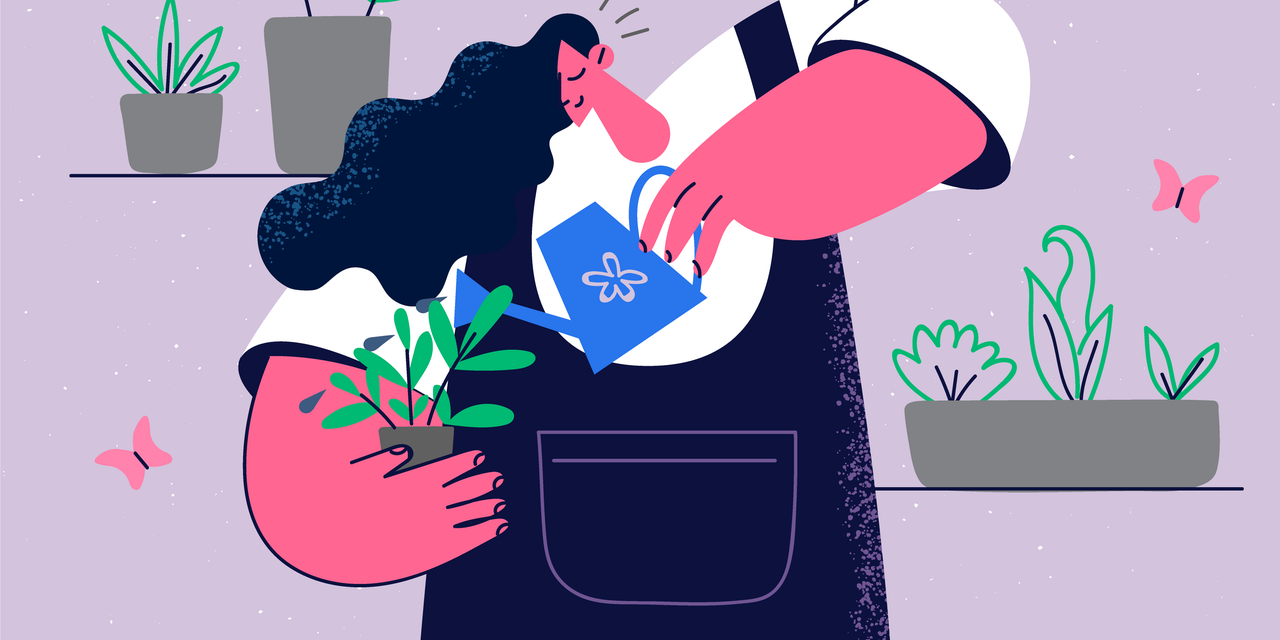Plant parenting is hard. Unlike a child, you can’t ask your fiddle leaf fig what it needs: Is it thirsty? Cold? Craving a little sunshine? Even if your thumb is greener than an aloe vera leaf, the answers to those questions aren’t always obvious. And if you’ve killed most of the plants you’ve ever owned, we don’t blame you for sticking with lower-maintenance home decor.
Tending to houseplants doesn’t have to be complicated, though, and it can definitely be worth the effort. Not only can adding some greenery make your space look more inviting, but bringing a form of nature into your home can also lower stress and generally lift your mood, as SELF previously reported.
Maybe your home is practically a greenhouse already, or you’ve dabbled in plant parenthood but can’t seem to hack it, or you stopped reading this article after “green thumb” and I’m talking to no one. No matter your level of horticultural knowledge, this advice from Paris Lalicata, a plant education specialist at The Sill, can help you keep your houseplants alive and thriving.
Get familiar with your home’s natural light situation.
Providing indoor plants with adequate light is the most important factor for keeping them healthy, Lalicata tells SELF, and it makes sense if you remember this fourth-grade science lesson: Sunlight drives photosynthesis, the process through which plants make food for themselves. “Without enough light, plants will eventually decline or completely defoliate [lose their leaves],” Lalicata says.
READ RELATED: The truth about emulsifiers: are they destroying our gut health?
To determine how much sunlight you have to offer your little sprouts, it’s important to know which direction your windows point (you can use a compass app on your phone if you’re not sure), as well as the difference between direct and indirect light. Pretend your plant has eyes: “Direct sunlight is when your plant can actually ‘see’ the sun,” Lalicata explains. “In the northern hemisphere, the sun generally rises in an east window, moves to the south in the afternoon, and sets in the west.” If your plant can’t “see” the sun but there’s still light coming through a nearby window, the light is considered indirect.
Here’s a little cheatsheet from Lalicata that can help ensure you’re meeting your plant’s light needs:
- North-facing windows: Low to moderate indirect light, which is great for plants that are low-light tolerant like snake plants, ZZ plants, and pothos plants. Bright direct sun is hard to come by with north-facing windows. If northern exposure is all you’ve got but you have a thing for bright-light plants, incorporating grow lights is your next best option. You can find them on Amazon, as well as garden centers and houseplant shops like The Sill.
- South-facing windows: Indirect light to direct sunlight in the afternoon. Spaces with southern exposure are best suited for sun-loving plants like succulents, cacti, and varieties of ficus.
- East-facing windows: Medium to bright, indirect light with direct sunlight in the morning (which isn’t strong enough to scorch foliage—phew). East windows are best suited for plants that can tolerate a wide spectrum of light, from low-light tolerant picks like the ZZ plant and parlor palm to species that need brighter (but still mostly indirect) light, like majesty palms and orchids.
- West-facing windows: Medium to bright indirect light, similar to east-facing windows, with some direct sunlight at the end of the day. Western exposure is ideal for most houseplants, including the philodendron, calathea, or money tree.
Learn to spot the signs of a thirsty plant.
“Water, too, is crucial for a plant’s growth and function,” Lalicata says. “It helps to provide structural support, prevents overheating, and even helps move minerals to all parts of a plant.” Much like different plants need different levels of light, they also require varying amounts of water. To get a general sense of how often you need to hydrate your houseplants, Lalicata suggests thinking of their natural environment: Is it hot and dry or rainy and tropical?



